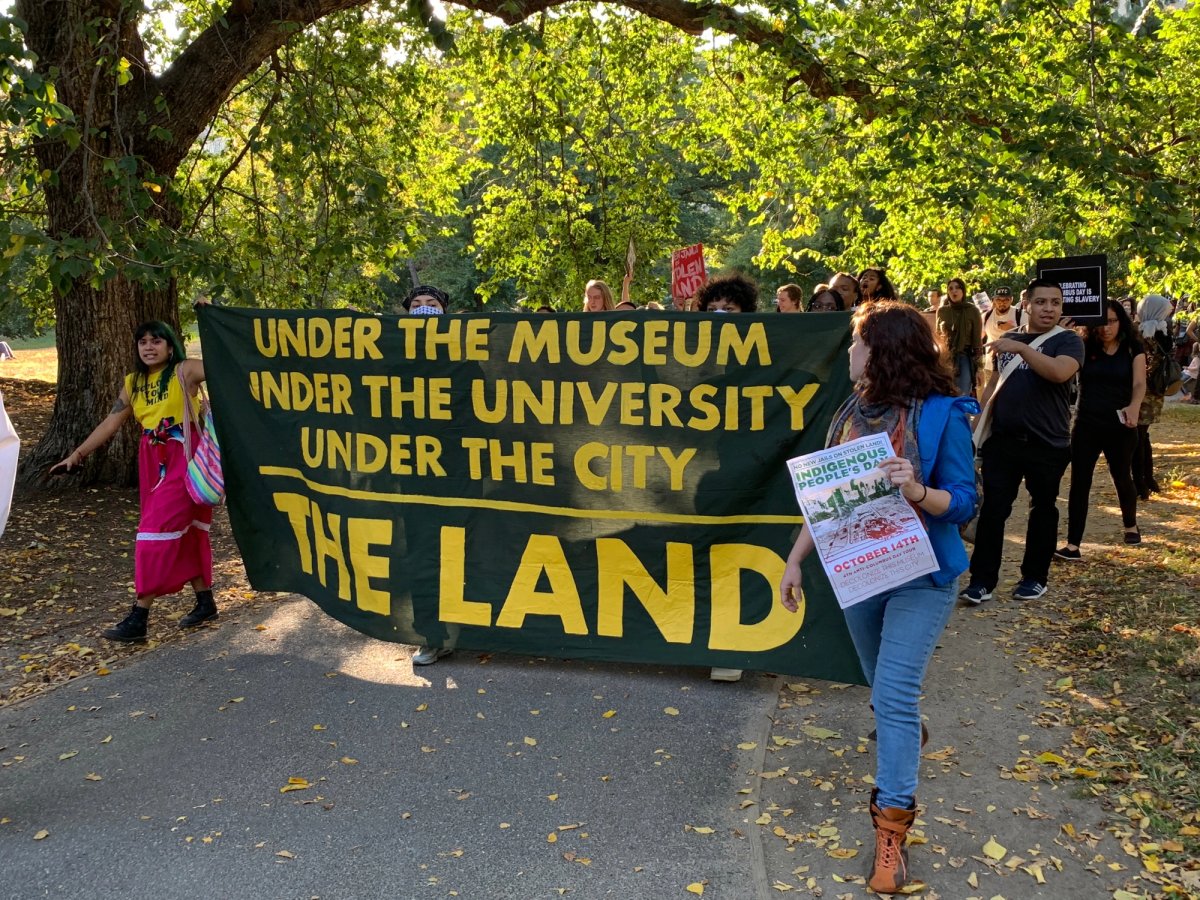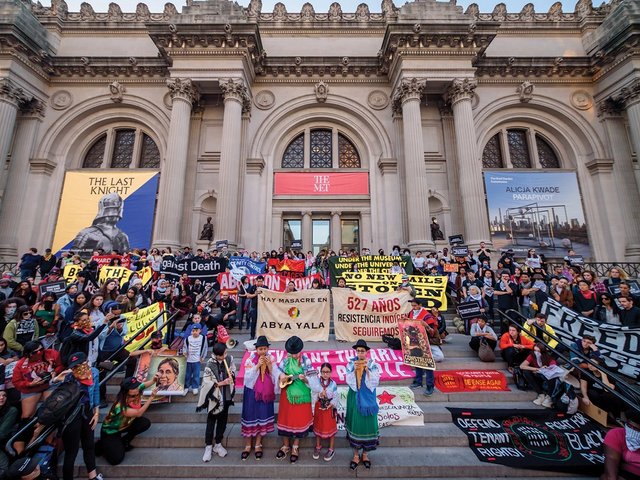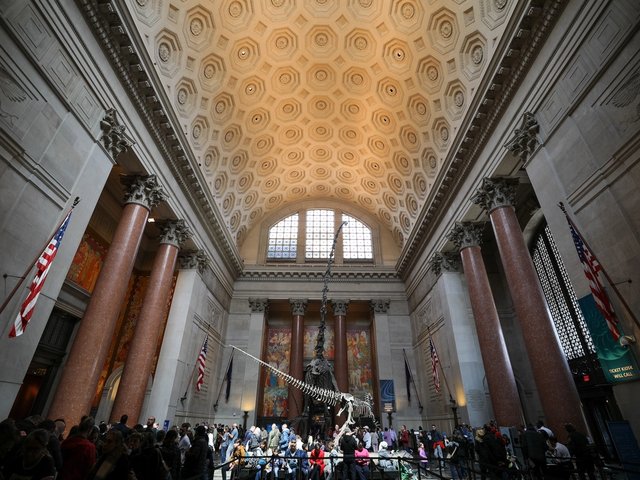While most Americans observed Columbus Day on 14 October, I celebrated Indigenous Peoples’ Day by protesting alongside other Native Americans. As a citizen of the Cherokee Nation living in New York, I am surrounded by daily reminders of the colonial violence that built the US. Monuments to figures like Christopher Columbus and Theodore Roosevelt, who held racist ideas and pushed genocidal policies, line my path to institutions like the America Museum of Natural History (AMNH).
There is a direct connection between how predominantly white curators have categorised Indigenous peoples as part of “natural history” and how we are misrepresented in contemporary art spaces. When the AMNH was founded in 1869, American empire-building was on the rise, and amateur collectors and anthropologists raided Native burial grounds for specimens that they thought would confirm the eugenic superiority of white Americans. The anthropology collection of the AMNH is built with these stolen bones. Even after the passage of the law in 1990 providing for the repatriation of human remains and cultural patrimony, the bones of more than 100,000 Indigenous people are still held in museums across the US.
Museums must recognise that their “objects” are my ancestors, and that the detainment of those remains inflicts ongoing harm on Native communities.
Arriving on the steps of the Metropolitan Museum of Art during last month’s protest, we chanted: “They want the art, but not the people.” Museums seem willing to appreciate Indigenous art only if it is detached and decontextualised from its kinfolk. If cultural institutions want Native people to be part of their programmes, they have to first demonstrate that they see us as more than curios and fossilised remains of the past. Decolonisation is not simply a question of returning bodies that have been stolen, but also restoring the Native communities that continue to survive settler invasion.
In Europe, museums are still grappling with the 2018 French government report that called for the repatriation of looted artefacts (including human remains) from Africa. French President Emmanuel Macron has supported restitution, which must also confront the aftermath of colonial war and looting. But in the US, where many museums have become repositories for Native remains, we have had no such dialogue. This is the silence we break by protesting on Indigenous Peoples’ Day.
Like many people outside these institutions, I want to shift how museums value context, authority and access. This requires exhibiting more Native artists on their own terms and hiring full-time Native curators to breathe life back into our own cultural materials.
But what is happening in the art world is part of a larger conversation in the US about Indigenous sovereignty and culture. Viewing Indigenous peoples as historical, rather than contemporary and alive, makes it easier to build pipelines through our lands, appropriate our cultures for profit, and murder our women, girls and two-spirit kin. These problems will not be solved overnight. But if museums dedicate time and resources to engaging with Native communities towards reciprocity and reparation, then it is possible that they can also be part of our Indigenous futures.
• Joseph M. Pierce is an associate professor at Stony Brook University





